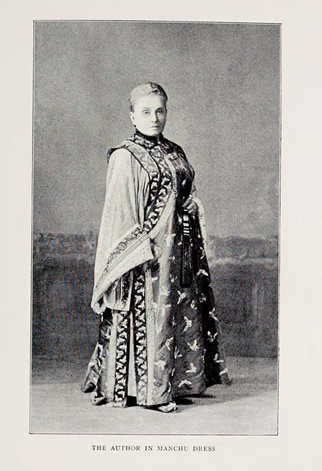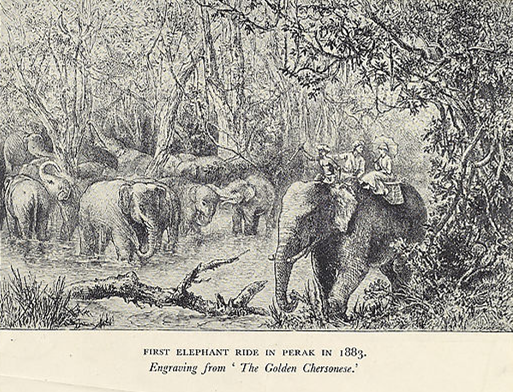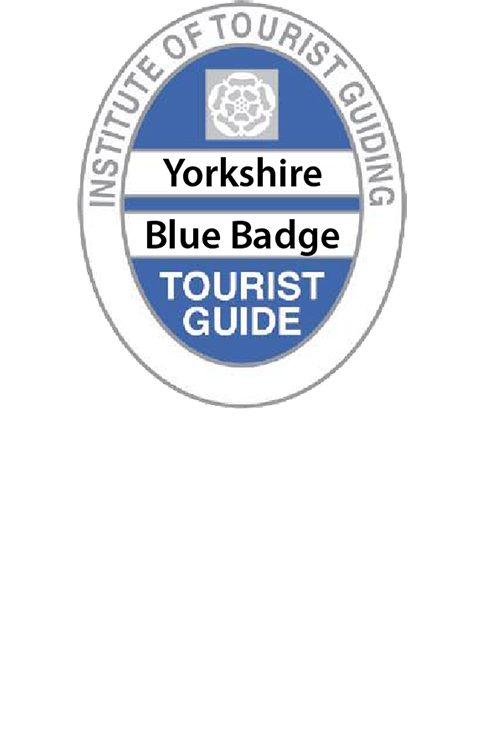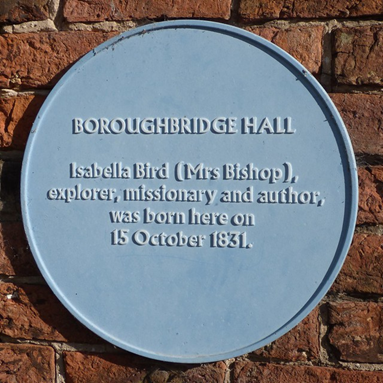The life and adventures of Isabella Bird Bishop has been recently brought into the public consciousness through BBC2’s ‘Trailblazers – A Rocky Mountain Trip’. A 3-part series televised in December 2022 following Ruby Wax, Mel B. and Emily Atack as they follow in the footsteps of this extraordinary Yorkshirewoman.
Born in 1831, at Boroughbridge Hall, Isabella was the daughter of the local vicar and a frail child whose ill-health was a constant source of worry to her parents. Reaching just 4’11” in height, this childhood of ill-health was an inauspicious start but she went on to lead a life far outside the expected norm of a Victorian gentlewoman.
How she developed such an urge for travel and adventure is a mystery but her father, Edward Bird believed that children should be taught about people and the natural world in a truthful and realistic light – not the fairytales fed to most children of the age. He would take his daughter with him on his rides around the countryside, showing her the roadside plants, crops, animals, farmhouses, cottages and features of the landscape; when they met people he would challenge her to describe them afterwards, encouraging her to explain her impressions with an open and curious mind. What he was doing, in fact, was nurturing a lifelong gift of observation. Where Victorian gentlemen were hailed as great explorers as they travelled the world bringing back exotic plants and tales of other cultures, so Isabella determined that she too would see that world for herself.
Isabella’s travelled to Australia in 1872 but she found the social atmosphere suffocating so she impulsively bought a passage to Hawaii where she rode around the country at will finding this new sort of wildness exhilarating.
Moving onto the USA, Isabella travelled 800 miles on horseback, across the Rocky Mountains of Colorado, still a dangerous ‘bandit country’ of pioneers and fur trappers and found love. Her unlikely suitor, Jim Nugent was a curious blend of volatile alcoholism and chivalry, but Isabella realised that alcohol was his master and moved on. Soon after, he was shot dead in a drunken brawl.
Isabella recorded her adventures in a series of letters which are published in ‘A Lady’s Life in the Rocky Mountains’. For most women, that might have been enough drama for one lifetime: but for Isabella, the adventure was only just beginning. The Far East was calling.
In China, Japan and Malaya, everything was fascinating, and everyone was worthy of attention; Isabella’s long letters home to her sister glowed with the joy of discovery, and the discomforts only added spice to the mix.
Isabella travelled by boat, yak and horse, by chair and on foot; no mode of transport daunted her, although she was overturned in her chair on one occasion and cut her head on the roof. She rode a yak over a Tibetan mountain summit in the falling snow, and braved raging rivers in flimsy-looking boats made of bamboo with a raised prow and four sails. She had nothing but praise for the crew, who were skilled and fearless, and did not pester her with unwanted attention:
Not only did Isabella write vividly and at great length about her experiences, but in later years she also photographed them too. She took great care to protect her camera equipment, often strapping it under her travelling chair, and when she developed the photographic plates she did so under the dark night sky. For Isabella, photography was a passion that rivalled, but never surpassed, the thrill of travel, and when she returned to Britain to give lectures she made good use of her images, displaying them to audiences with a limelight lantern.
In 1881, Miss Bird became Mrs Bishop. An Edinburgh surgeon named John Bishop had fallen in love with Isabella six years before, but Isabella had rebelled against the prospect of domestic duties and children and had taken herself off on another adventure. Now, grief-stricken by her sister’s death, she accepted Bishop’s proposal; but her married life was sadly short-lived, because within five years she was widowed. Using her inheritance, she determined to travel as a missionary and set course for India where she opened a hospital in memory of her husband before travelling across the Indian sub-continent and the middle east.
By the 1890’s Isabella’s exploits had made her a household name with articles in magazines and journals across the U.K. In the 1890’s, she became the first woman to be awarded Honorary Fellowship of the Royal Scottish Geographical Society and the first woman allowed to join the Royal Geographical Society. Her final great journey took place in 1897, when she travelled up the Yangtze and Han rivers in China and Korea, respectively. Later still, she went to Morocco, where she travelled among the Berbers and had to use a ladder to mount her black stallion, a gift from the Sultan. A few months after returning from Morocco, Isabella Bird Bishop fell ill at her home in Edinburgh and died on 7th October 1904.
A Blue Plaque at Boroughbridge Hall commemorates the birth of this extraordinary Yorkshire woman.
Article contributed by Fran Pride, Yorkshire Blue Badge Guided – https://yorkshiresbestguides.co.uk/project/fran-pride/
Images courtesy of The National Library of Scotland




